
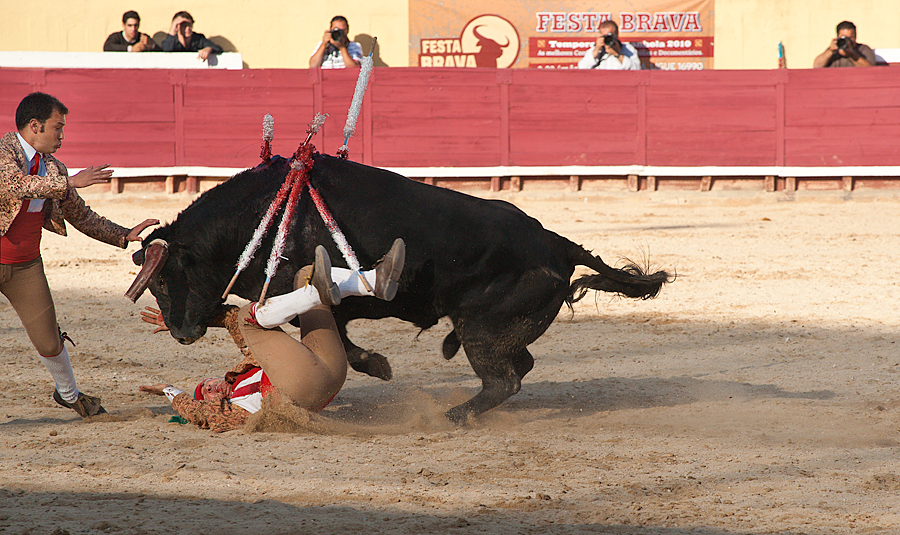
Animal rights activists may try to sway you away from attending a bullfight with their posters and loud protests, but don’t be so quick to dismiss this event. Or even pity the bull. In Portugal, the bull not only lives, but has the chance to get even. And often succeeds! The forcados, who enter the ring to take on the half-ton beast, are the ones who get trampled, hurled into the air, injured or sometimes worse.
Portuguese bullfighting began centuries ago as a sport among nobility, and a national celebration to mark the crowning of a new king or a royal wedding. The purpose was to showcase the talent of mounted calvarymen who trained their Lusitano horses to perform intricate movements akin to equestrian ballet, which stemmed from war manuevers practiced from 8th-15th century when resisting invading Moors. In 17th c. the Marquis of Marialva, Dom Pedro Meneses, who was Horse Master to the royal family, greatly shaped the modern rules and traditions of Portuguese bullfighting which continue to this day.

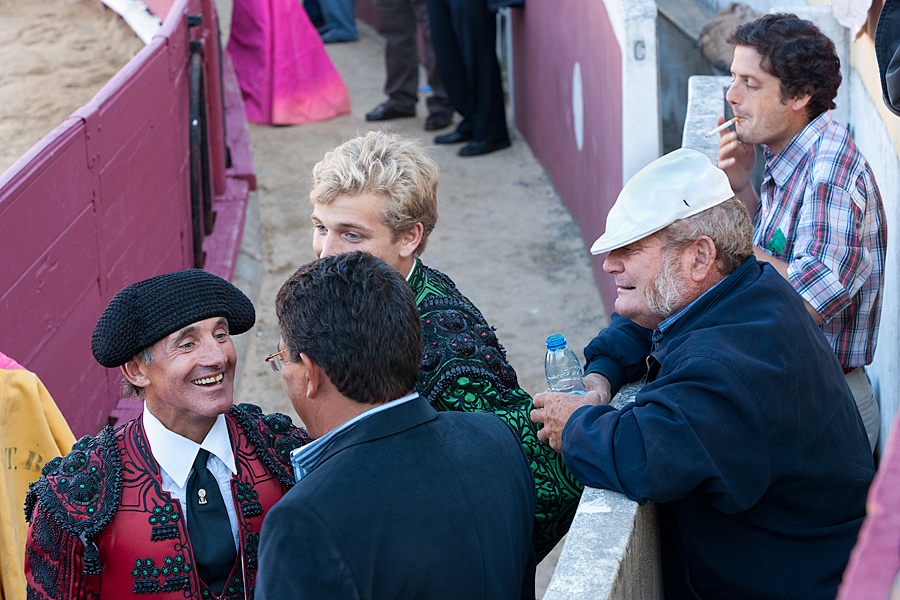
Bullfights, which generally take place on Sunday nights (5 or 10pm) from April to October in central Portugal, draw audiences from all social classes. All seem to join in the celebration of life and offer a unified support to honor the brave men who test their courage against the aggressive bulls. Surrounded by locals in the stands–we didn’t see any other tourists– it was easy to absorb the importance of this long-standing tradition and grasp a little deeper appreciation of their culture. Plus it was highly entertaining and thrilling to watch! Our little group didn’t know what to expect but we were all gasping, groaning and cheering the men on before the 2nd round. There are 6 rounds, and each one features 3 different players who enter the ring…

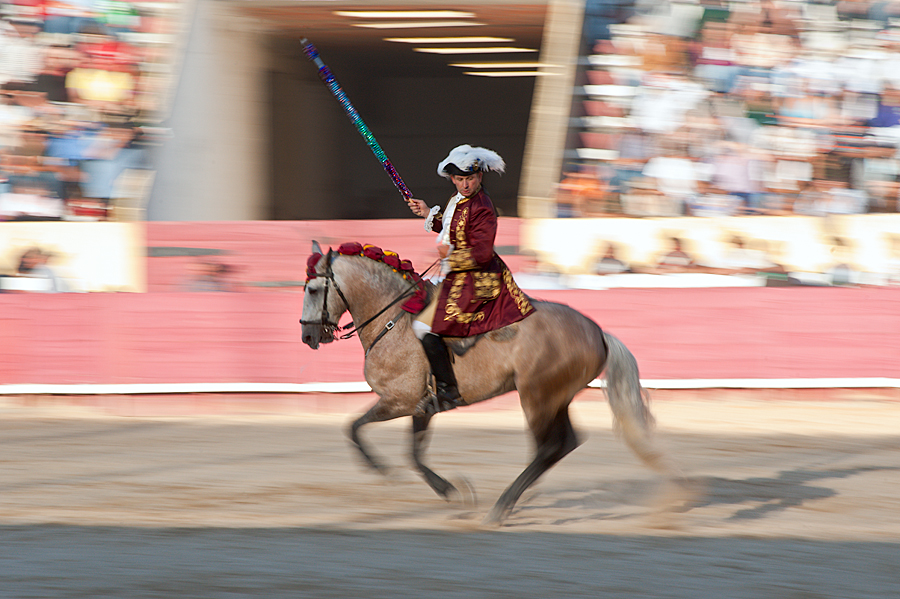
A cavaleiro, elegantly dressed in a traditional costume of 17th century, is the first to enter the ring. As the bull chases him, the cavaleiro demonstrates his skill at controlling his horse, avoiding impact with the charging bull with quick graceful moves and sudden side steps. He may taunt the bull into faster action by holding his feathered hat inches away from the bull. He also plunges 6 darts into the fatty hump of the bull to increase his aggression. But he does so following strict codes of honor. He waits for the bull to initiate the charge, which must be face to face until the last possible moment. Seconds away from colliding, the cavaleiro suddenly plunges in a dart and expertly dodges the bull to a cheering crowd. Each dart becomes shorter and more difficult to place. If the horse tires, the cavaleiro will exit and reenter on a fresh horse to continue the round.

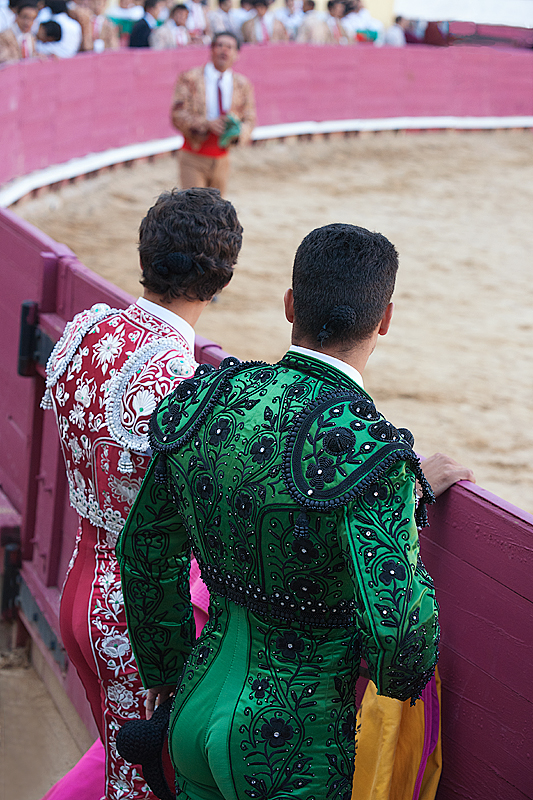
Poised on the sidelines, toreiros are ready to jump into the ring when needed to distract the bull with a cape–such as when a cavaleiro needs to change horses or to divert a raging bull from vulnerable forcados. Otherwise they are 2nd into the ring. Their purpose (other than eye candy, right Jill?) is to tire out the bull a bit before the forcados confront him on foot.

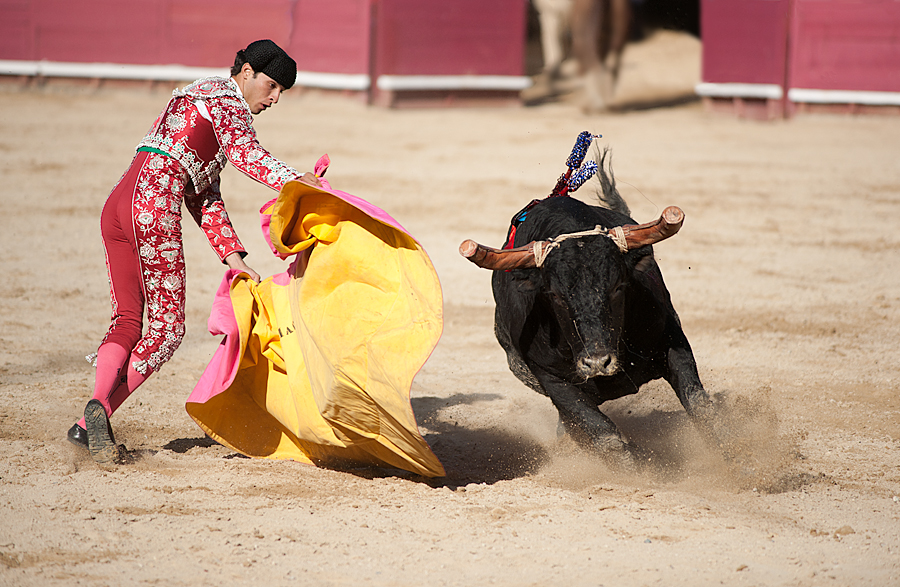
Think he’s tired? Don’t think so… Look at him stare down his next opponents!

 The forcados, or fearless ones, are the final participants in the round. Dressed in embroidered jackets and knickers, a team of 8 men jump into the ring and line up behind their leader, who’s wearing a green stocking cap. The objective in this round is for the leading forcado to grab hold of the bull by the horns and hang on with all his might. Cauz if he fall offs, he starts over… his reputation for bravery is at stake.
The forcados, or fearless ones, are the final participants in the round. Dressed in embroidered jackets and knickers, a team of 8 men jump into the ring and line up behind their leader, who’s wearing a green stocking cap. The objective in this round is for the leading forcado to grab hold of the bull by the horns and hang on with all his might. Cauz if he fall offs, he starts over… his reputation for bravery is at stake.
It would bring great shame to his team and his family if he does not succeed. Even if injured, the forcado must continue his attempt to hang onto the bull despite broken ribs, arms or legs. (In a later round we watched an injured forcado who finally succeeded after repeated tries who was in such bad shape that he left the ring on a stretcher.) Once the leader is up, the other forcados rush forward to help him stay on and subdue the bull. One guy always tries to slow down the bull by pulling on his tail. He can look rather humorous, skiing through the dirt.
The forcado sequence is the most exciting to watch (and photograph). Step one: confront your fears, or rather, the bull…

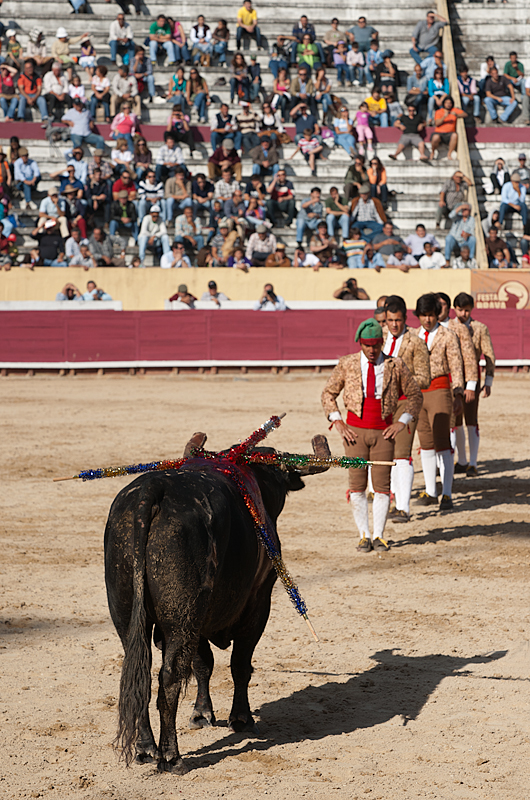
Tension rises as the leader steps away from the group toward the bull. The audience grows quiet…as eyes zing back and forth between the forcado and the bull…anticipating the action.

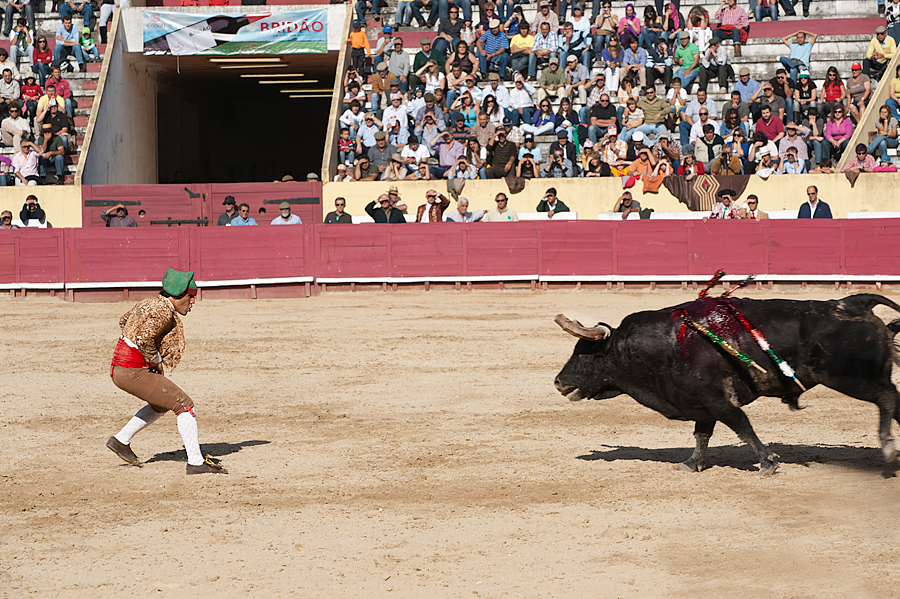
“O Torro! Torro!! Torro!!” he taunts, provoking the bull. Suddenly the bull lowers its head, locks eyes on the forcado and charges…

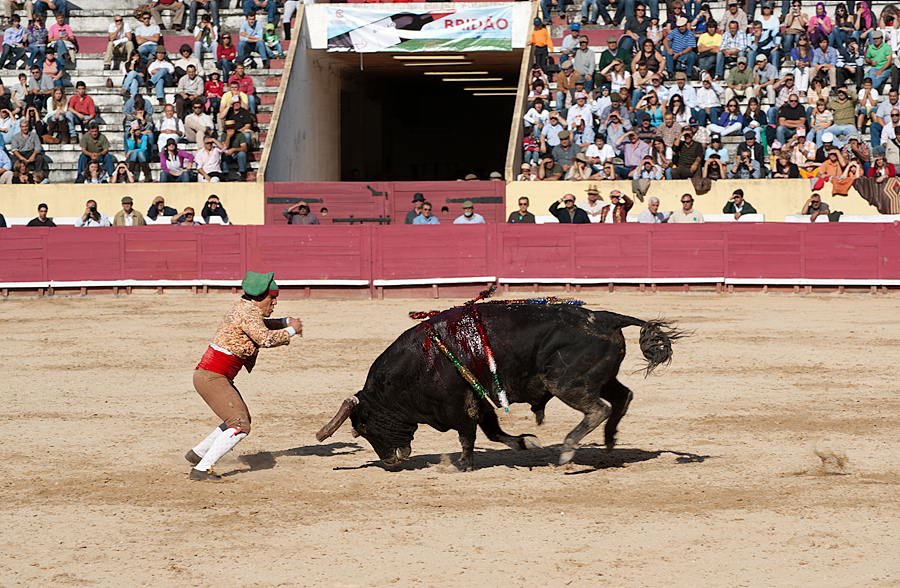
Get ready, here we go!!

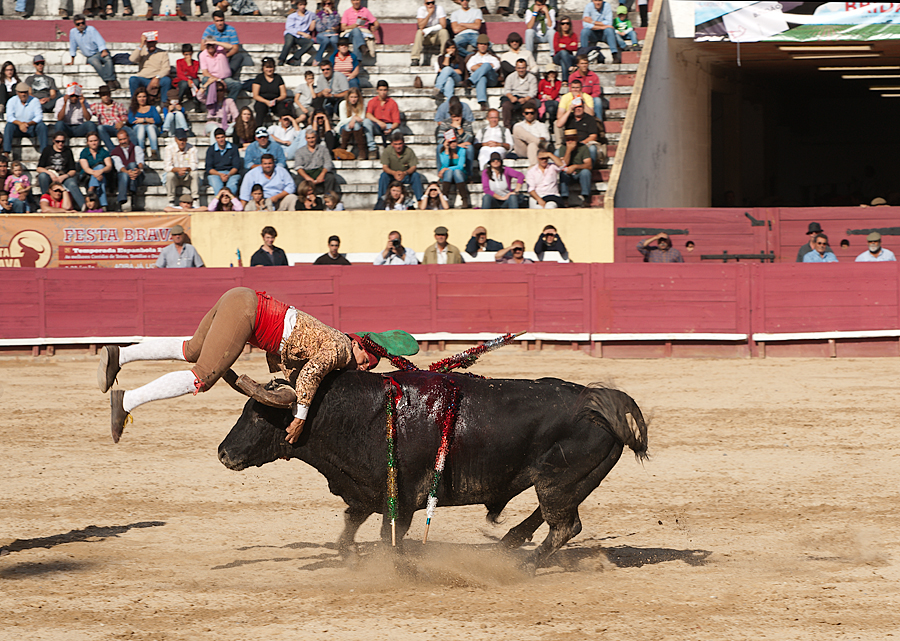
Oomph!! The crowd whistles, yells and cheers. Perfect form…but will he stay on???

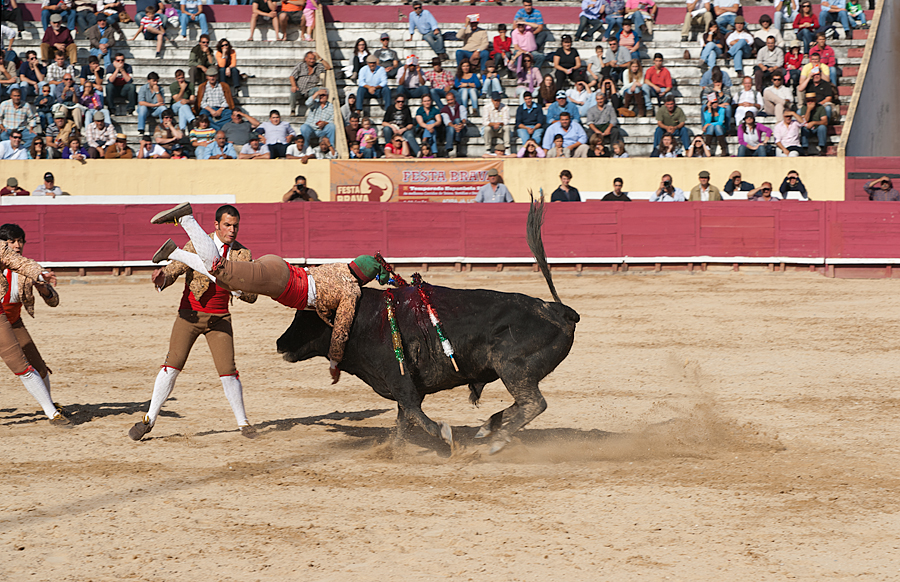
Nope. Not this time. The audience groans…

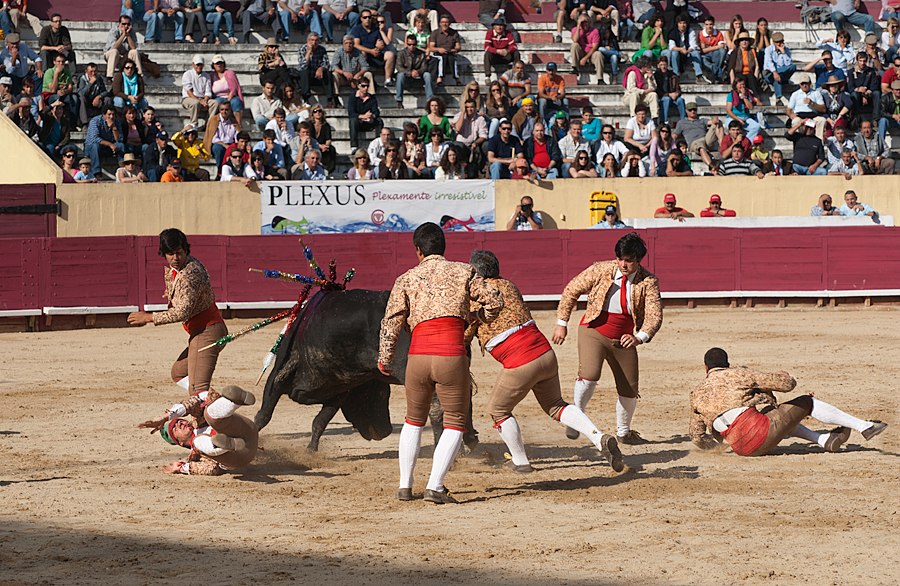
Pure pandemonium! Danger lurks as the bull could turn on any of them.

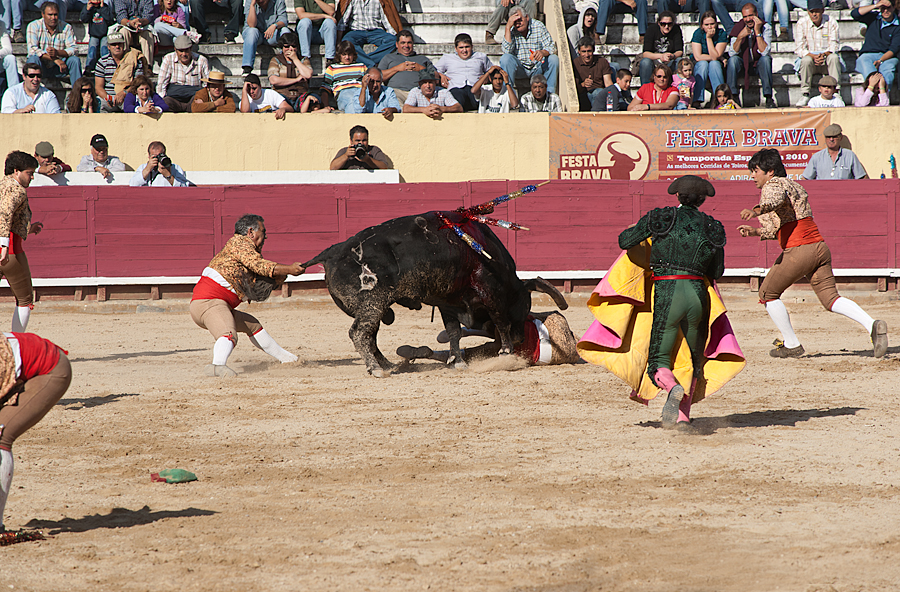
A forcado pulls the tail, trying to prevent the bull from trampling the man underfoot.

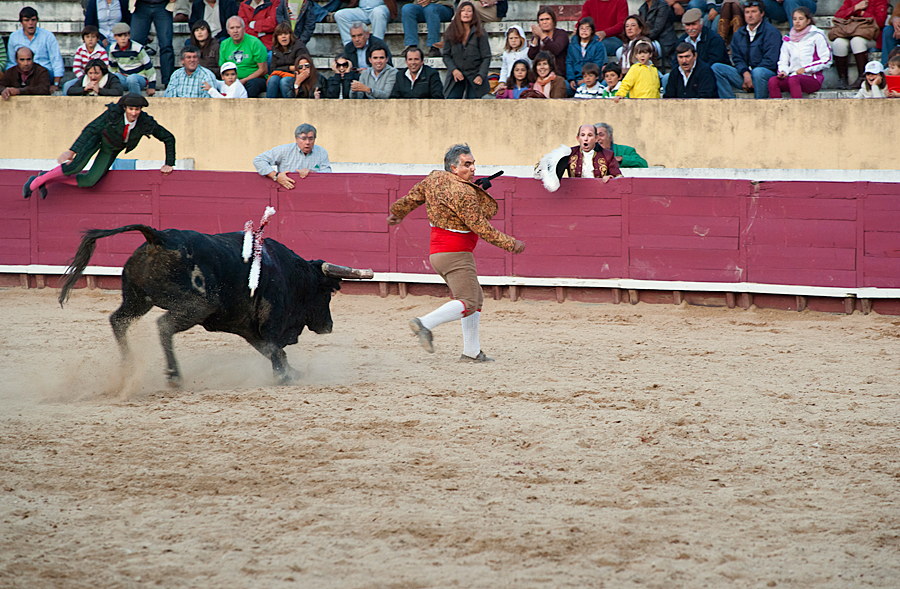
Oops, guess the bull didn’t like that…Hey, look out! RUN!!! This was the only time we saw a bull charging the tail puller. As you can see, another toreiro is already jumping into the ring.

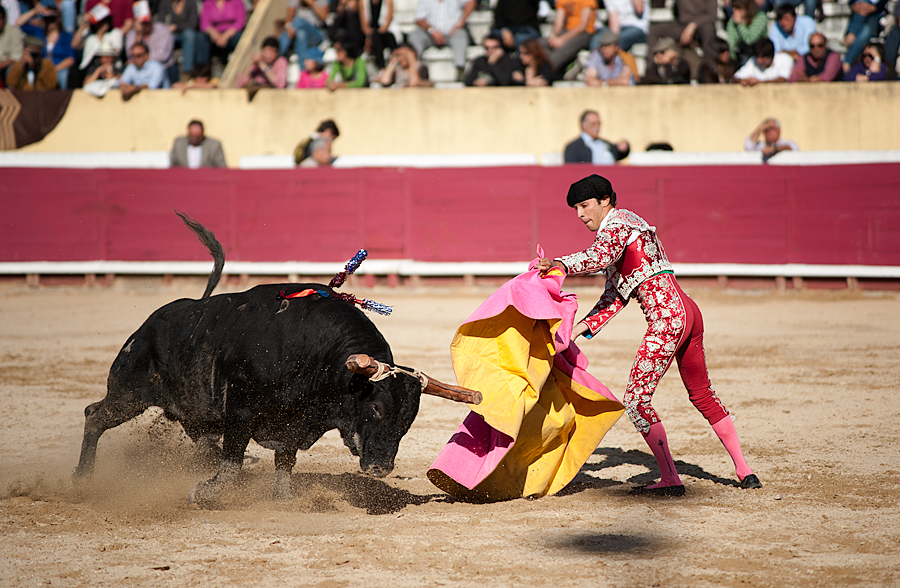
The art of distraction to the rescue. Then it was time for the forcados to face the bull again. The same leader taunted the same bull. And chaos ensued a few more times before the bull was finally subdued. This marked the end of the first round. Cows released into the ring enticed the bull into herding them through the open door where they disappeared from view.

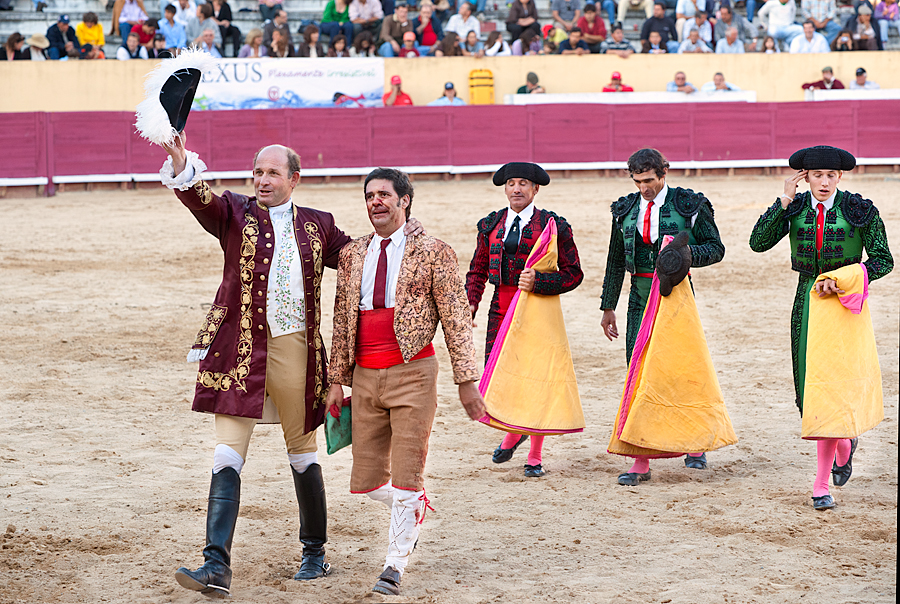
The cavaleiros, toreiros and forcados who played that round assemble before judges before taking a victory lap around the ring to an applauding crowd. And then the next round begins with a fresh set of cavaleiros, horses, bulls and fearless forcados…

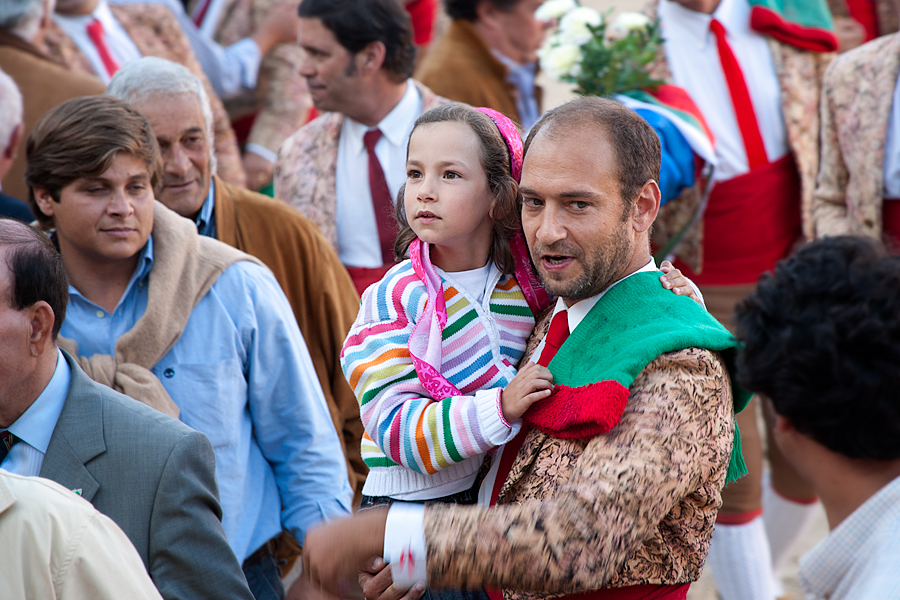
After 6 rounds, the bullfight is over. As crowds dissapate, family members flock to the forcados tos share their honor and sense of pride. This little girl seems awfully proud of her daddy.



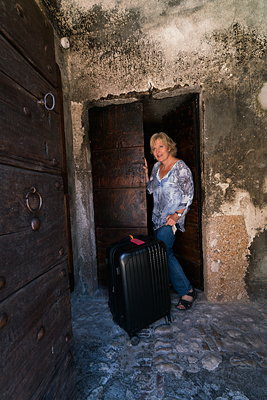
Nuno Sousa - Hi there! Thank you for showing and liking our culture. I really hope you have enjoyed the bullfight and our country in general. By the looks of the crowd, you attend a small bullfight (not a demerit of course). But if you really want to feel the “febre tauromáquica” (bullfight culture) I invite you and your family to come again and watch a show in Campo Pequeno (biggest arena in Portugal) and see a “Corrida de Gala à Antiga Portuguesa”, wich means old tradicional portuguese bullfight. It´s a spetacular show, that hasn´t changed since XVII century.
If you want you can contact me to my e-mail and I will tell you all the details and will be a pleasure to go watch a bullfight with you and explain what´s happening.
Cheers,
Nuno Sousa.
admin - Thanks for writing, Nuno. We attended a traditional bullfight during the annual bullfighting festival in Portugal and did have a local with us who explained what was happening. It was very fascinating to watch to forcados and witness their bravery confronting the bulls. Definitely was one of the highlights of our 2 week trip to Portugal! Thank you for the personal invite to return to Portugal and attend a bullfight with us…you never know!